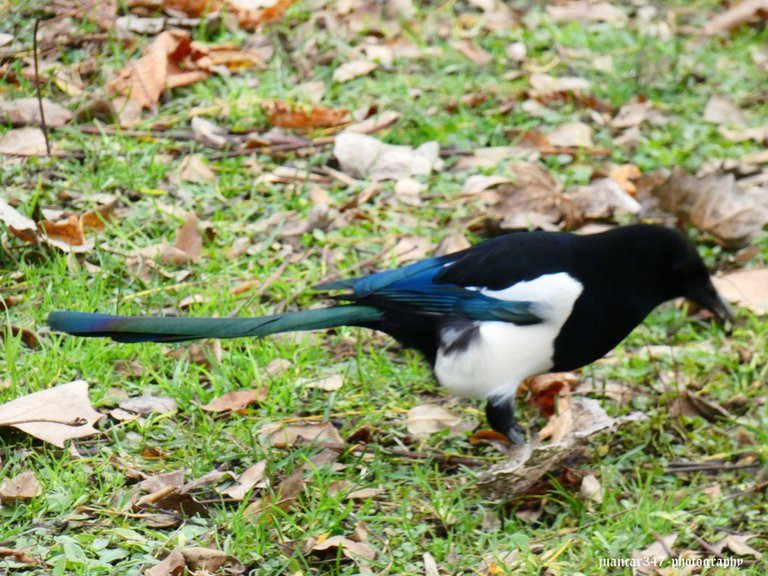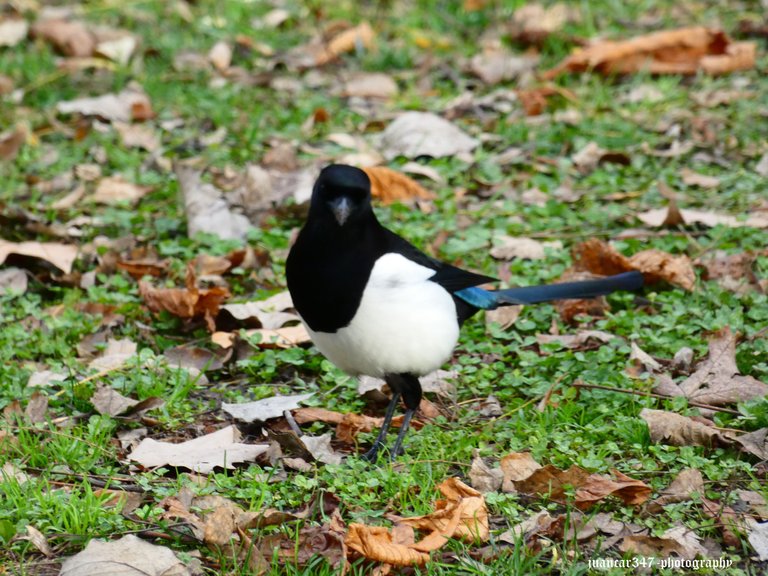[ENG-SPN] Magpies and popular superstition / Las urracas y la superstición popular
From that close relationship that existed in ancient times between men and the wide variety of beings with whom they shared the environment, curious stories and traditions were born, which, approximately, remained in force until the time of the Enlightenment, when men were surreptitiously introduced and dangerously, the virus of rationality, going to swell the cursed pages of contempt, under the metaphorical Malleus Maleficarum of a word, whose pronunciation entails condemnation and mockery: superstition.
This became even more evident, if possible, in those brutal differences in vision between city manors and country people, educated, the latter, in respect for Nature in which they lived and from which they were nourished, noting a greater accentuation, in those people whose roots descended from a culture, the Celtic, which made everything natural, the infinite temple of a wide variety of beliefs. So much so, that until relatively recent times, the magpie was considered not only an emissary of the Great Mother Goddess, of which, in addition, it carried the colors -black and white, which, curiously, in medieval times were the colors colors worn by the famous Bauceant or banner of the Knights Templar and even, a century before them, it flamed among those others worn by the great Muslim leader, Almanzor- and as an emissary, it also had the power to curse and attract evil luck, on all those who dared to hurt her and also on the rude ones who crossed her path, without saying good morning or good afternoon and not asking her how she and her family were. This custom, by the way, still exists in some small Asturian mountain villages and can also be detected in some small rural areas of the always magical Ireland. Perhaps the Spanish writer Miguel Delibes drew from these stories the special relationship between the character of Azarías and his pretty kite, on which it could be said that the greatest dramatic force of his excellent novel, entitled 'Los santos inocentes' (The holy innocents), is centered.
De esa estrecha relación que existía antiguamente entre los hombres y la amplia variedad de seres con los que compartían el entorno, nacieron curiosas historias y tradiciones, que, aproximadamente, permanecieron vigentes hasta la época de la Ilustración, cuando sobre los hombres se introdujo, subrepticia y peligrosamente, el virus de la racionalidad, pasando a engrosar las páginas malditas del desprecio, bajo el metafórico Malleus Maleficarum de una palabra, cuya pronunciación, conlleva la condena y la burla: superstición.
Esto se hizo más evidente, aun, si cabe, en esas brutales diferencias de visión entre los señoríos de ciudad y las gentes del campo, educadas, éstas últimas, en el respeto a la Naturaleza en la que vivían y de la que se nutrían, constatándose una acentuación mayor, en aquellas personas cuyas raíces descendían de una cultura, la celta, que hacían de todo lo natural, el templo infinito de una amplia variedad de creencias. Tanto era así, que hasta tiempos relativamente recientes, se consideraba a la urraca, no sólo emisaria de la Gran Diosa Madre, de la que, además, portaba los colores -el blanco y el negro, que, curiosamente, en época medieval fueron los colores que lucía el famoso Bauceant o estandarte de los caballeros templarios e incluso, un siglo antes que éstos, flameaba entre aquellos otros que lucía el gran caudillo musulmán, Almanzor- y como emisaria, tenía, además, el poder de maldecir y atraer la mala suerte, sobre todos aquellos que osaran lastimarla y también sobre los maleducados que se cruzaban en su camino, sin darle los buenos días o las buenas tardes y no preguntarle cómo se encontraba ella y su familia. Costumbre ésta, por cierto, que todavía subsiste en algunas pequeñas aldeas montañosas asturianas y que se detecta, también, en algunos pequeños entornos rurales de la siempre mágica Irlanda. Quizás de estos relatos sacara el escritor español Miguel Delibes, la especial relación entre el personaje de Azarías y su milana bonita, sobre los que podría decirse que se centra la mayor fuerza dramática de su excelente novela, titulada ‘Los santos inocentes’.
NOTICE: Both the text and the photographs that accompany it are my exclusive intellectual property and, therefore, are subject to my Copyright.
AVISO: Tanto el texto, como las fotografías que lo acompañan, son de mi exclusiva propiedad intelectual y por lo tanto, están sujetos a mis Derechos de Autor.






Hi, my friend. Have a Happy Day